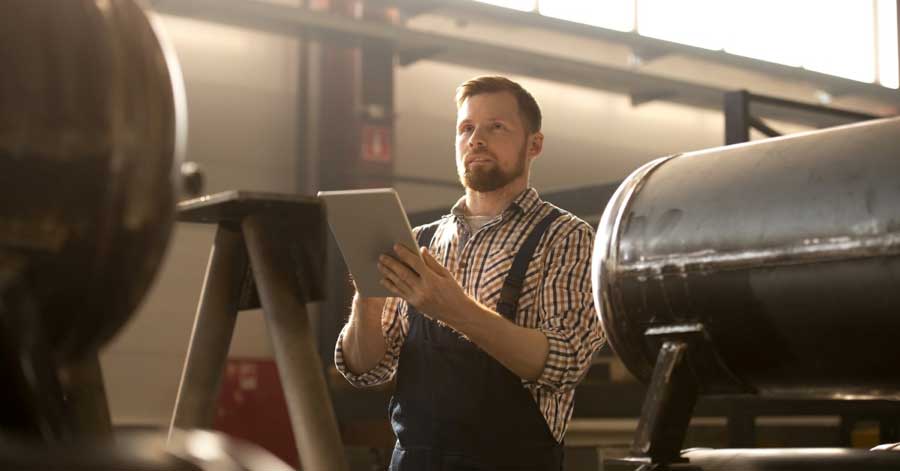Plex CTO Jerry Foster says manufacturing weaknesses exposed during COVID-19 could have a silver lining.
If there is a single lesson to be learned from the 2020 global pandemic, it is this: Manufacturing agility is a necessity, not a nice-to-have, in a globalized modern economy.
In the decades leading up to COVID-19, manufacturers became increasingly reliant on single-threaded supply chains. For companies already struggling to react to change quickly, whether due to low quality raw materials or geographic-specific crises like hurricanes or political unrest, these single threaded supply chains created even more risk.
In the midst of COVID-19, many manufacturers are experiencing the detrimental impact of relying on single-threaded supply chains While some may have anticipated localized risk, few were prepared for a global catastrophe on this scale.
As companies grapple with the gravity of worldwide supply-chain disruption, the urgency to stabilize their business has compelled manufacturers to accelerate business transformation efforts. Many are adopting Industry 4.0 technologies to help them effectively manage their businesses through change.
Some manufacturers still operate on the same technology used 20, 40, or even 60 years ago. Business systems can still be locked in data silos or even be paper based. For many manufacturers, employees’ ability to interact in-person remains a built-in necessity – whether they are cross-checking plant-specific data sets located on-premise or conducting manual quality measurements.
According to a survey of 200 global manufacturing businesses, most manufacturers believe future growth will rely on operational improvements, such as cost reductions, increased capacity and new production initiatives. Improvements here rely on adopting new technology. In fact, nearly half of manufacturers (44 percent) were planning to fund new production technology within the next 12-18 months, but only 22 percent had advanced to pilot stages to date. While digital transformation was a recognized necessity, the urgency underpinning the need for change has been kicked into overdrive over the past few months.
The coronavirus pandemic has acted as a catalyst for change for manufacturers, increasing the urgency of digital transformation from a nice-to-have to a need-to-have investment. Before the pandemic, only 24 percent of manufacturers had fully implemented a smart manufacturing initiative, leaving more than three quarters without the necessary control and visibility tools to respond to the pandemic fallout and make good business decisions in a rapidly changing environment. In light of COVID-19, 36 percent of manufacturers faced supply chain disruption, according to the National Association of Manufacturers (NAM) – driving strong interest in operations agility as manufacturers struggled to adapt. The key to unlocking operations agility lies in digital transformation and the cloud.

Smart Manufacturing gives employees insight into production from the shop floor to the top floor.
Industry 4.0 has revolutionized the manufacturing landscape, pushing operations to the cloud to provide employees with a zoomed-in view – say, of individual sensors – or zoomed-out a view of the entire factory, as required. Smart factories that have already fully embraced cloud-based solutions gain access to the benefits of a converged physical and digital business, giving them the ability to react to change with greater insight and control than their outdated peers. The same survey of 200 manufacturers found three key factors were critical to manufacturers’ success when implementing smart manufacturing systems:
The first factor to successful adoption of smart technologies is clearly defining desired business outcomes. Instead of approaching digital transformation with nebulous goals of advancement, manufacturers should seek to solve specific business problems. For example, more advance notice regarding component failure or greater insight into bottlenecks.
The second factor involves identifying the processes, technology and training necessary to achieve business outcomes. Not every tool is best suited for every problem; the more aware manufacturers are of the capabilities and limitations of smart technology, the more they will be able to make informed decisions about how best to integrate with their businesses. Employee training is also a vital component, ensuring employees are able to use the technology to generate the best insights possible.
Finally, successful smart manufacturers realize expected value by both implementing the right technology and driving enterprise-wide adoption. People are one of the largest inhibiting factors to successful digital transformation, but by showing business value, providing training, and pushing employee buy-in, smart manufacturers can unlock the full potential of cloud-based systems. With an integrated approach to manufacturing software that delivers a single source of truth, manufacturers can immediately see positive business outcomes.
With greater visibility and control over operations from the shop floor to the top floor, smart manufacturers realize benefits ranging from faster product testing and development (key in a rapidly changing landscape) to more empowered sales teams and better use of staff for higher-value tasks. Such gains can result in double-digit growth formerly inaccessible to the business. This advancement and increased agility/ability to react to change allows companies to think beyond day-to-day operations stability and supply chain vulnerability, leaving them in a better position to manage risk at any scale in a globalized, modern economy. With this stability comes better decision-making, enabling manufacturers to spend less time worrying about today and more time building for tomorrow.

Jerry Foster
About the Author
Jerry Foster is the current CTO and one of the founders of Plex Systems. Initially serving as chief programmer, Jerry today leads the company’s technology strategy and research initiatives to build next-generation cloud solutions tailored to the manufacturing enterprise. Centered at the intersection of manufacturing and technology, Jerry has empowered and motivated his team to find new ways to implement leading technology innovations, such as being one of the first to apply Google Glassto manufacturing operations. Jerry holds a Bachelor of Science Degree in Computer Science from Liberty University.
Contact:
jfos@plex.com
www.plex.com
Scott Ellyson, CEO of East West Manufacturing, brings decades of global manufacturing and supply chain leadership to the conversation. In this episode, he shares practical insights on scaling operations, navigating complexity, and building resilient manufacturing networks in an increasingly connected world.